Broke the arm in three places, broke a bone in the shoulder, assorted muscle and tendon damage, and, oh yes, dislocated the shoulder as well. Four hours of surgery.
To answer your question, it did hurt as bad as sounds.
But that was some time ago now, and I really should learn to roll one of these days.
And yesterday was that day, as I headed down to Crystal Pool for a rolling lesson from the fine folks at Ocean River Sports.
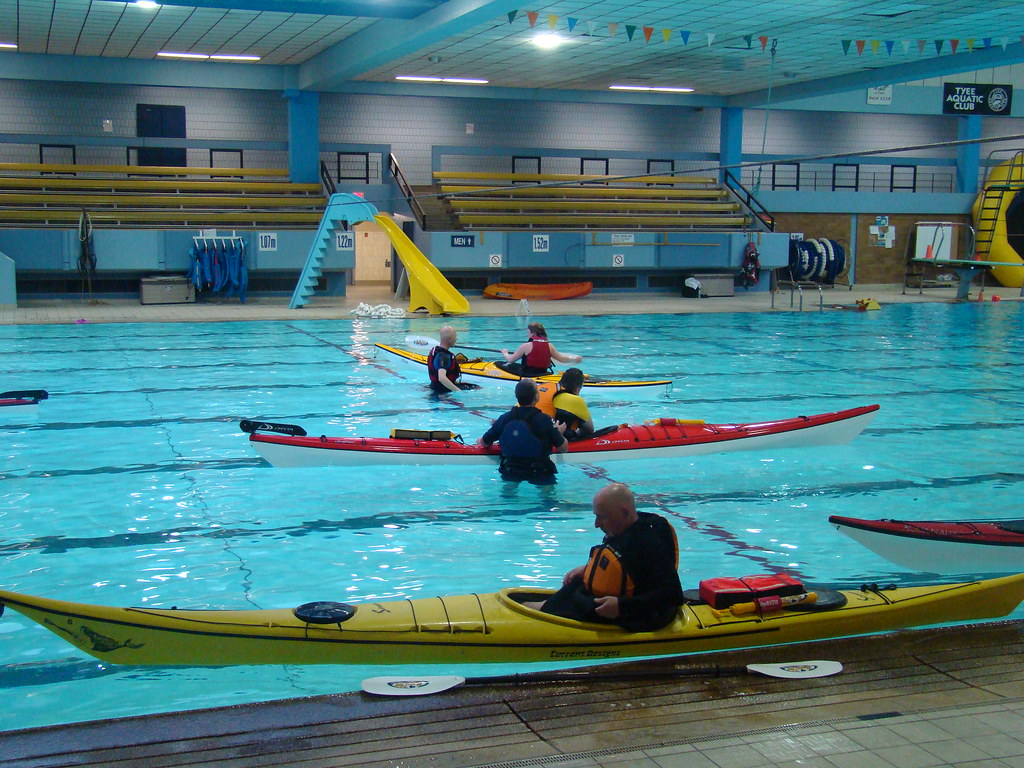
Louise was manning the camera as my three classmates and I hit the water. Unfortunately we'd all forgotten to bring kayaks. So instead we practiced some paddle fu.
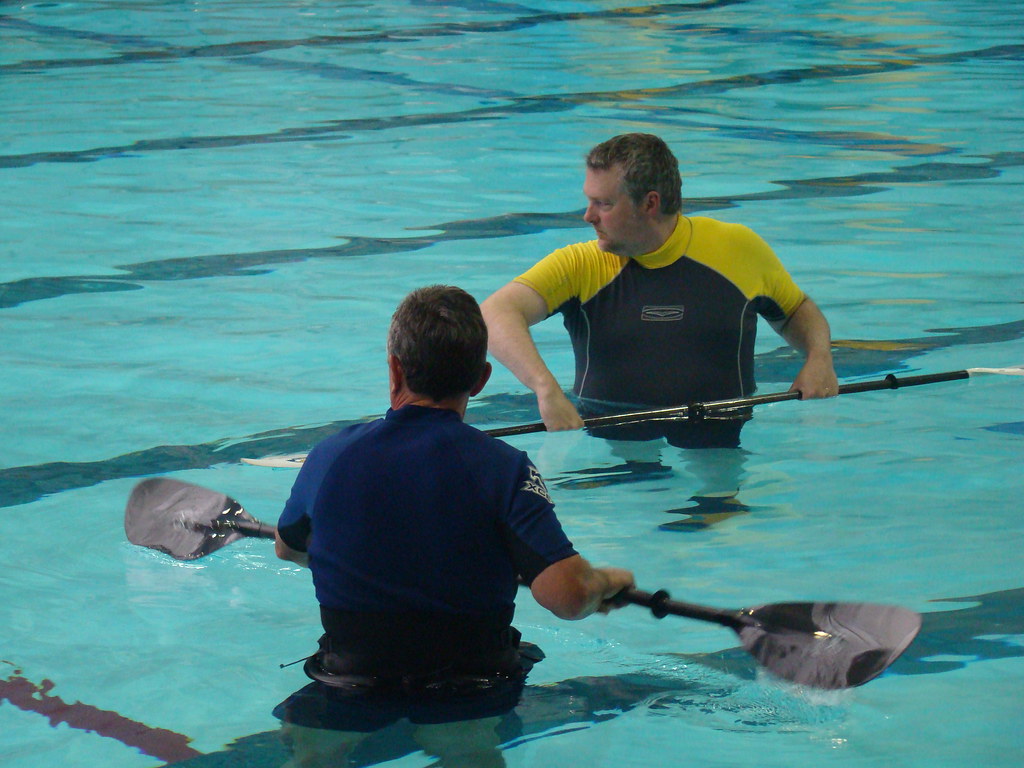
Well, no, I'm kidding we did bring kayaks. Our instructor began by demonstrating a couple of rolls, then we practiced some paddle strokes and grips that we would need for the roll. Then we finally entered our kayaks and practiced our hip flicks on the side of the pool.
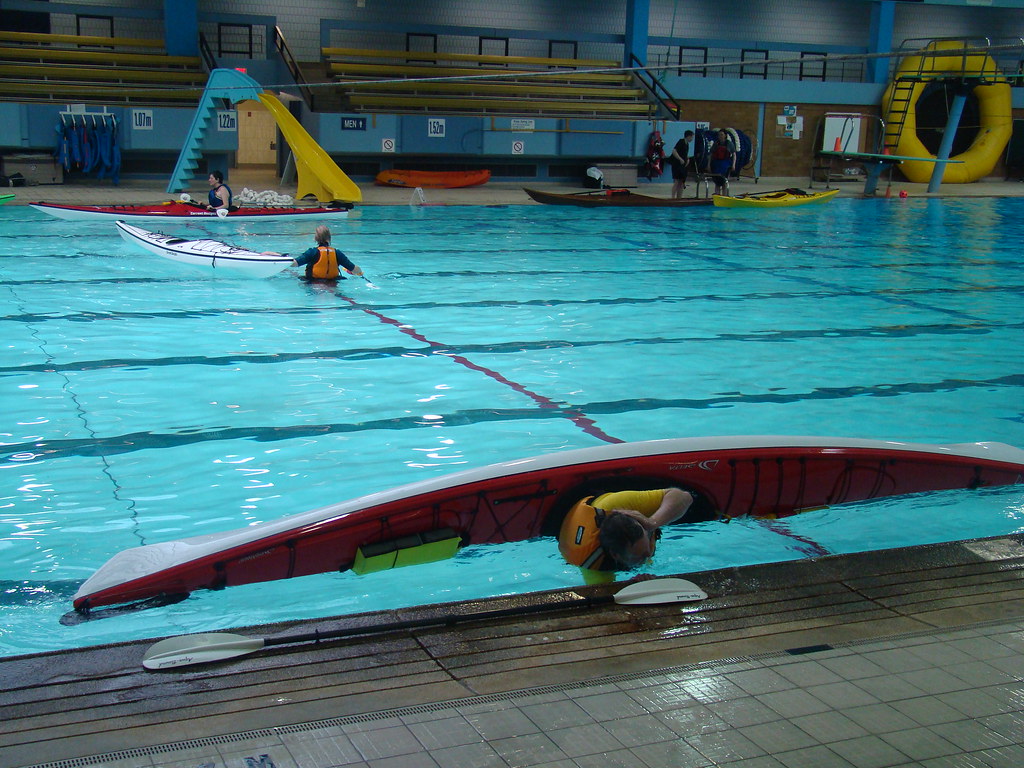
The roll we were being taught was the Pawlata Roll also known as the Extended Roll, and I found this to be an interesting choice. There certainly doesn't seem to be any consistency in terms of what roll a newbie roller should learn first. The first rolling DVD I watched taught the sweep roll, the aforementioned lesson I previously took taught the C and C. (And now I can quite confidently say that I can do them all equally badly. Which is to say, hardly at all.)
Being upside can makes things very confusing. Here I confirm with the instructor which way is up.
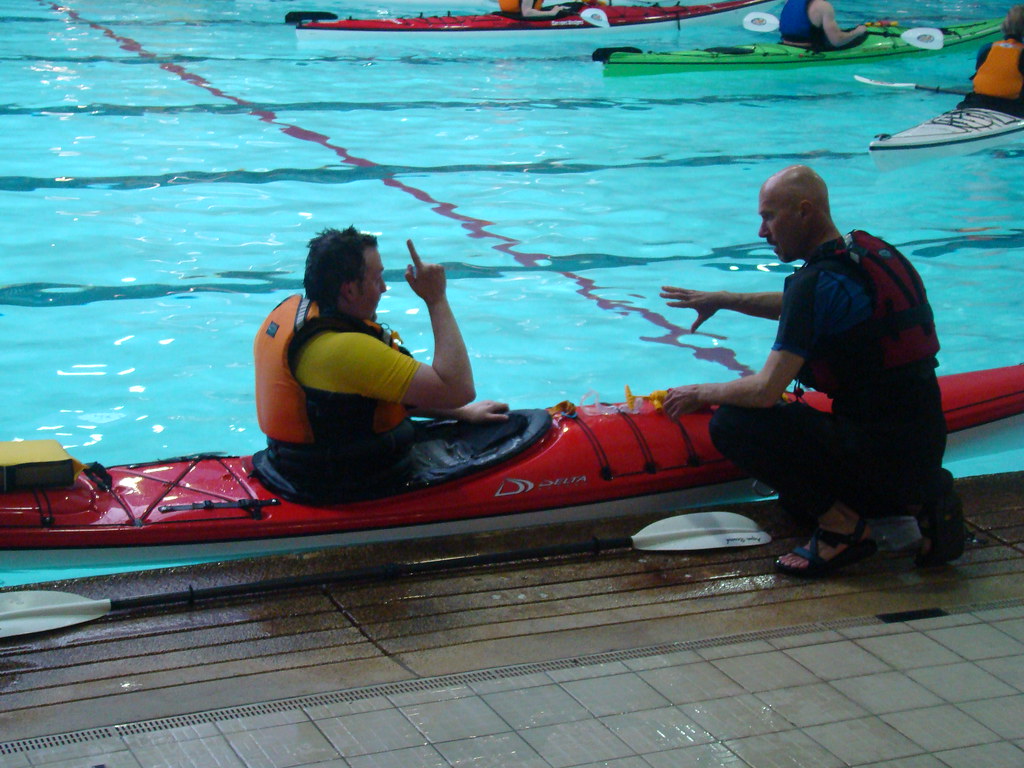
This attempt didn't go so well...
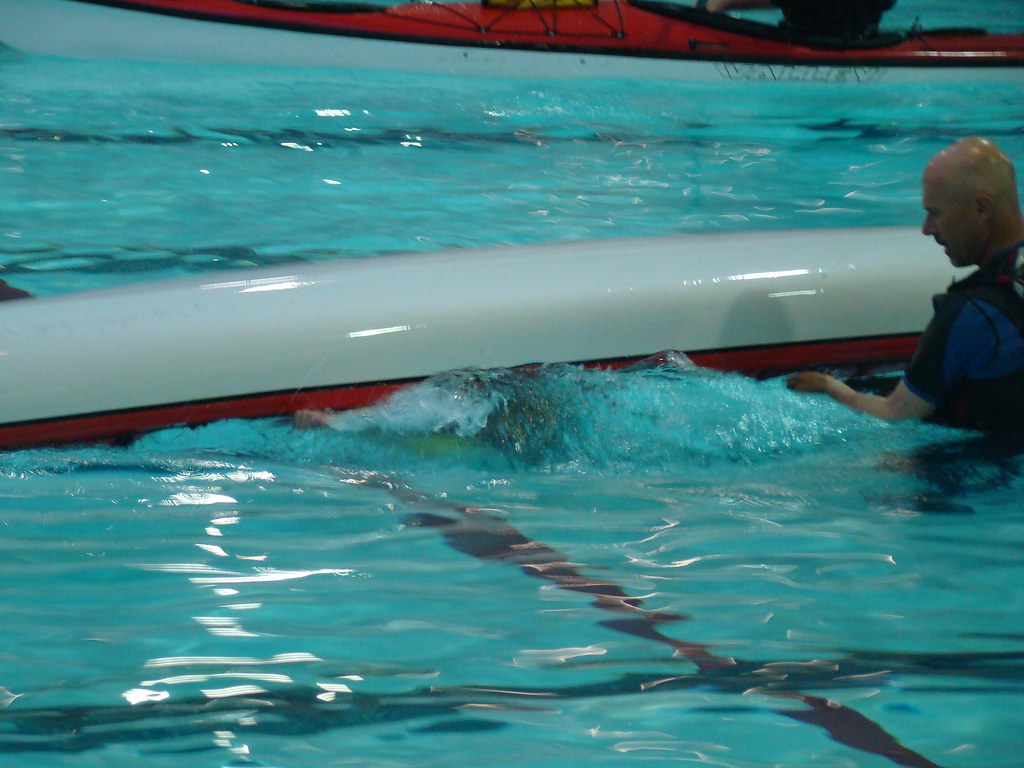
...but this one got me out of the water. (Although the pictured roll attempt was not one of my best efforts, it was one of the best pictures. And yes, I noticed a lot of flex in that blade when I saw the picture, and that certainly isn't what should be happening.)
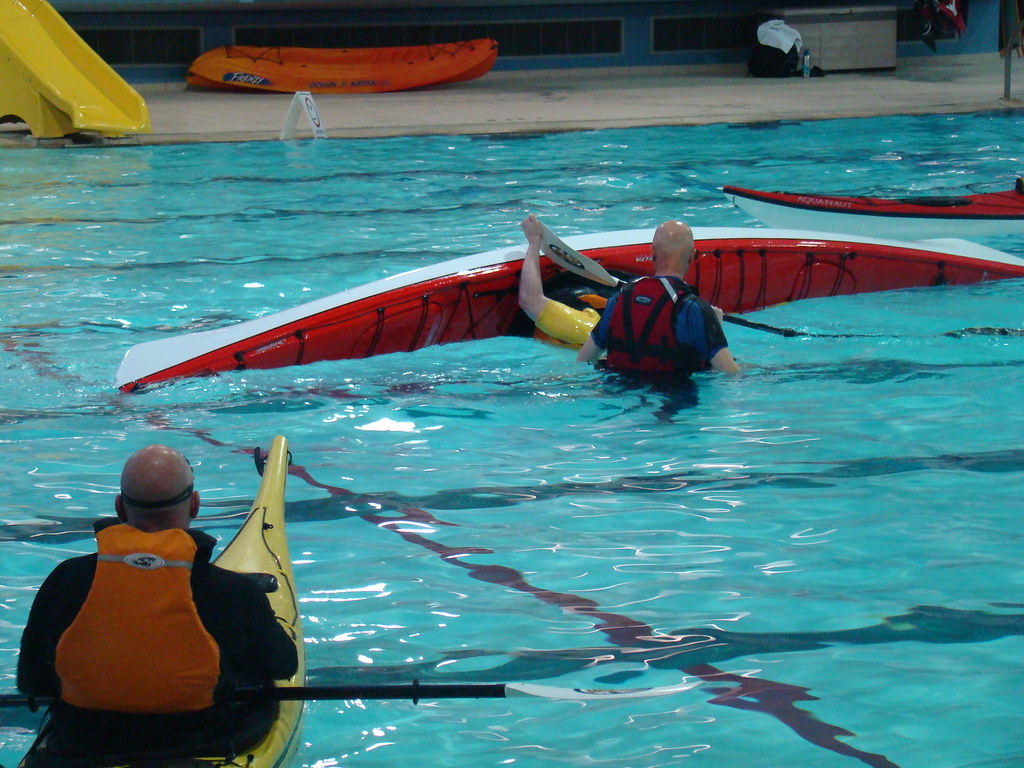
After numerous attempts, I'd say that I only landed a couple of rolls, and I know I didn't score any style points. But I did gain some experience with another type of roll, and I certainly got a sense of the technique involved. I was certainly able to tell during the course of a roll attempt when it was going well, and when it was going badly, and I was surprised how early on in an attempt that that distinction could be made. Clearly, it is a precise maneuver and that, as opposed to brute strength, is what will get you and your kayak upside right when you've both gone upside wrong. More practice is needed. Thetis Lake, anyone?

In the next two weeks or so, my blog will slide into roll instruction. But here is a preview. I believe that 90% of rolling is mental, and I will elaborate on that in the coming weeks.
ReplyDeleteI don't like the 'practicing the hip flick' on the side of the pool, because the side of the pool can't tell you when your pushing with your hands, and when your using your hips. I like holding the hands of the person doing the hip flick. I can then give them feed back as to how much they are using their arms which will then become their paddle.
to back this up, I will ask you to look at the last photo in your post. Look at how much flex there is in the shaft of your paddle. That is a paddle under a lot of stress, because you aren't using your hips.
I don't want to come off as either A) a know it all, B) a monday morning quarterback or C) an idiot, so I apologize if that is how any of this is read.
I will leave you with this thought, rolling should be fun. Like this!
http://www.vimeo.com/5809787
PO
No worries, I have no illusions that I was using anything close to proper form, so any comments are appreciated (although to be fair, the pictured roll attempt was not one of my best efforts, but it was one of the best pictures. And yes, I noticed a lot of flex in that blade when I saw that picture, and that certainly isn't what should be happening.)
ReplyDeleteWith regards to the hip flick on the side of the pool, I was trying to be aware of this and to just use my hips. I was also trying to hold the side of the pool just with a couple of fingertips as I did them.
I did have fun, "frustrating fun" as one of my fellow wannabe rollers described it. :)
I'm a big non-as-flexible-as I'd-like-to-be guy in a big boat... rolling ain't gonna happen right away. But I did come away with a better feel for it than I had before.
Looking forward to your upcoming rolling instruction on your blog.
What's your opinion of teaching the Pawlata roll as a first roll for rolling newbies?
I teach the C to C first. I think it's the easiest. I think the only problem with the Pawlata (or screw roll as I was taught) is the paddle generates a lot of lift, which reinforces using the paddle.
ReplyDeleteRolling is like hitting a golf ball. when it's right it's effortless. When it's wrong, it's all kinds of wrong.
were you using nose plugs?
PO
No nose plugs. None of us did, except the instructor. When I took the previous lesson, I didn't have an issue with water going up my nose. This time I did, so I'd wish I had brought some.
ReplyDeleteMy issue with teaching the Pawlata first is that it requires more set-up than the C and C or the sweep. In real world conditions, I'd imagine a newbie roller getting a little confused and/or panicked while changing grips on the paddle, whereas with the other two, the set-up is less complicated and presumably easier to achieve when one finds themselves unexpectedly upside down.